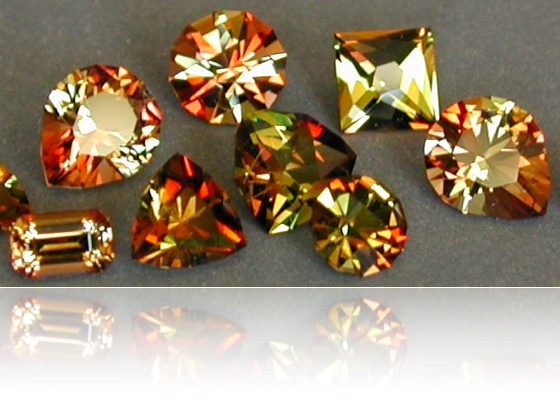Andalusite
Andalusite is named after Andalusia, the province of Spain where it was first discovered. While it is a strikingly beautiful gem, it is largely unknown by the gem buying public. With a hardness of 7.5 on the Mohs scale, it is very suitable for all kinds of jewelry. Andalusite is used widely in making jewelry and objets d’arts, on account of its hard texture and durability. It is often regarded as a poor cousin to the extremely valuable though rare Alexanderite gemstone, since it mimics the stone in color play, showing a range of earth tones. It is a very popular gem in jewelry, especially for men. One of the other reasons andalusite has been referred to as “poor man’s alexandrite” is the fact that it is reasonably priced—anywhere from $40 to $200 per carat, which is far less than natural alexandrite.
The colors of andalusite cover the range of yellow-green, green, brownish red and reddish brown. Depending on the cut each gemstone carries two colors that also differ in intensity, or blend into a mosaic.
The attraction of andalusite comes from its play of colors if one changes the viewing angle. A similar effect is gained when the light comes from different directions. Andalusite is a naturally occurring gemstone, meaning it does not require any enhancements, such as heat, to help achieve its beauty.
Spain is no longer the primary source for andalusite. In today’s era, Sri Lanka and Brazil provide a large portion of andalusite gemstones. In addition to Spain, Sri Lanka, and Brazil, andalusite has also been found in the United States, Canada, Australia, and Russia.
Chiastolite, also known as star andalusite, contains inclusions of carbon that is arranged in the formation of a cross. In many countries, these have been used as amulets because of the symbolism of the cross. Star andalusite is thought to be a protective gemstone against “evil eye” curses. Metaphysically speaking, some people believe andalusite broadens the intellect and provides mental clarity to better solve problems.
